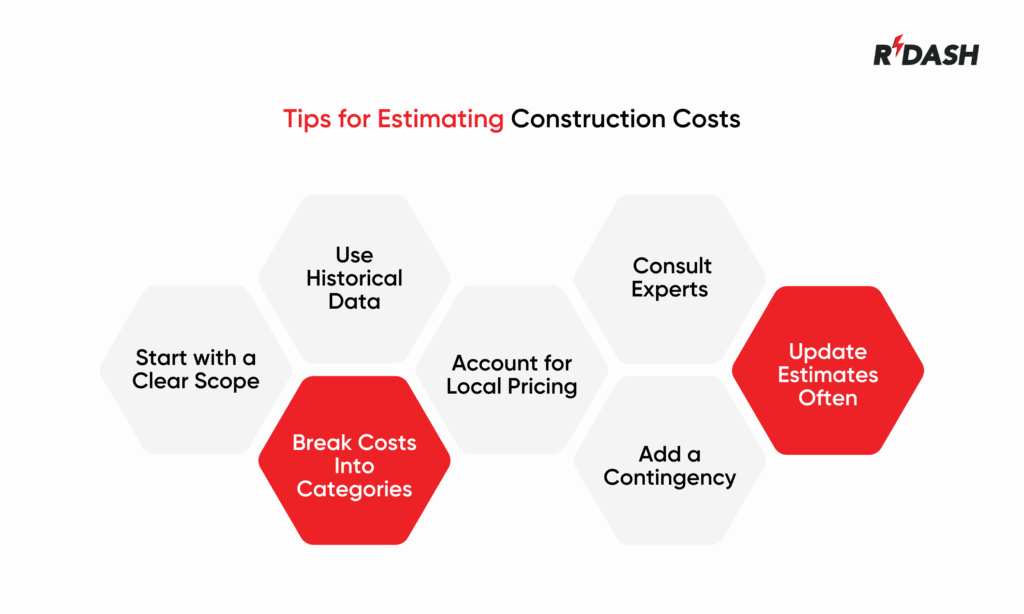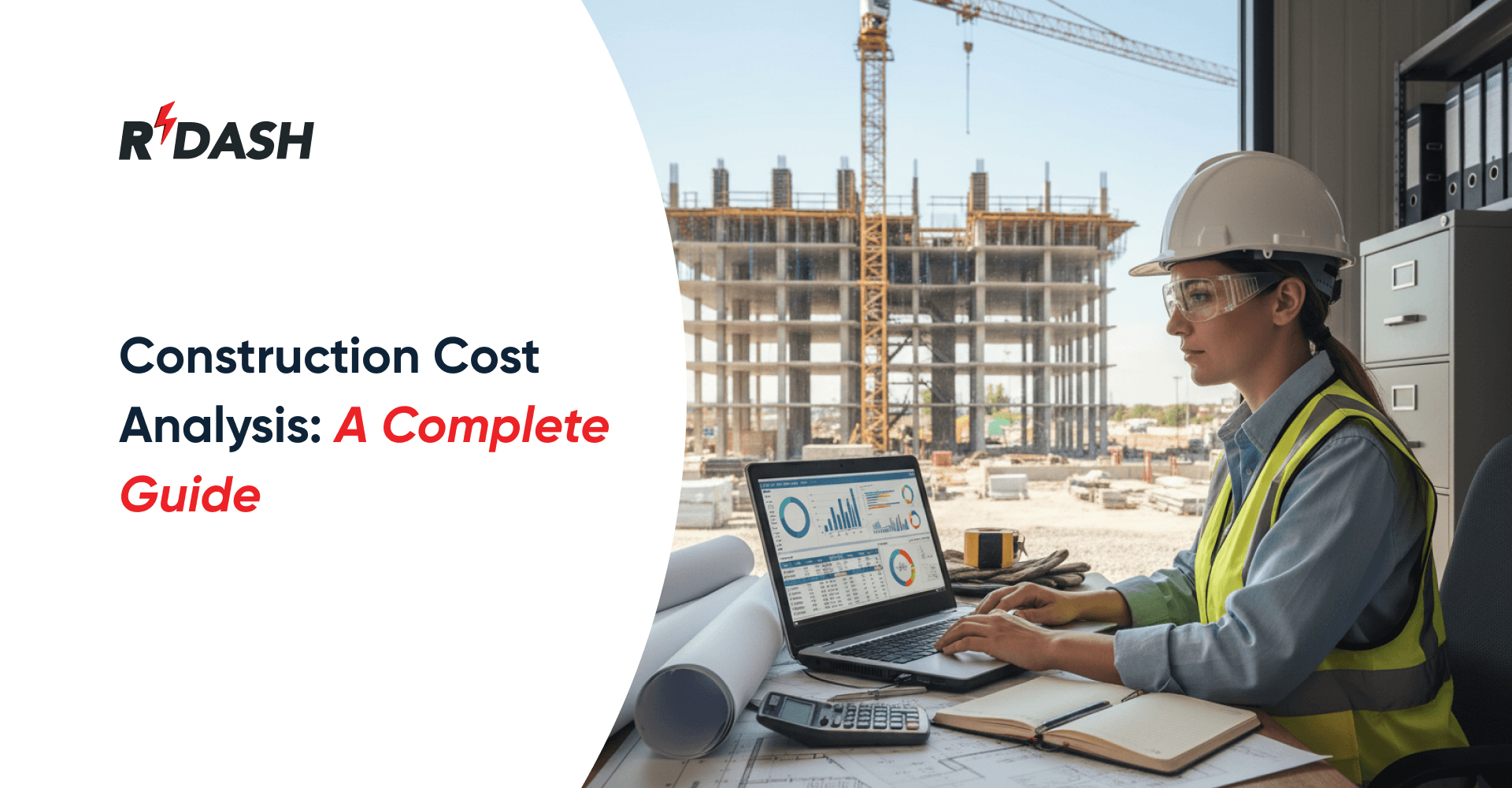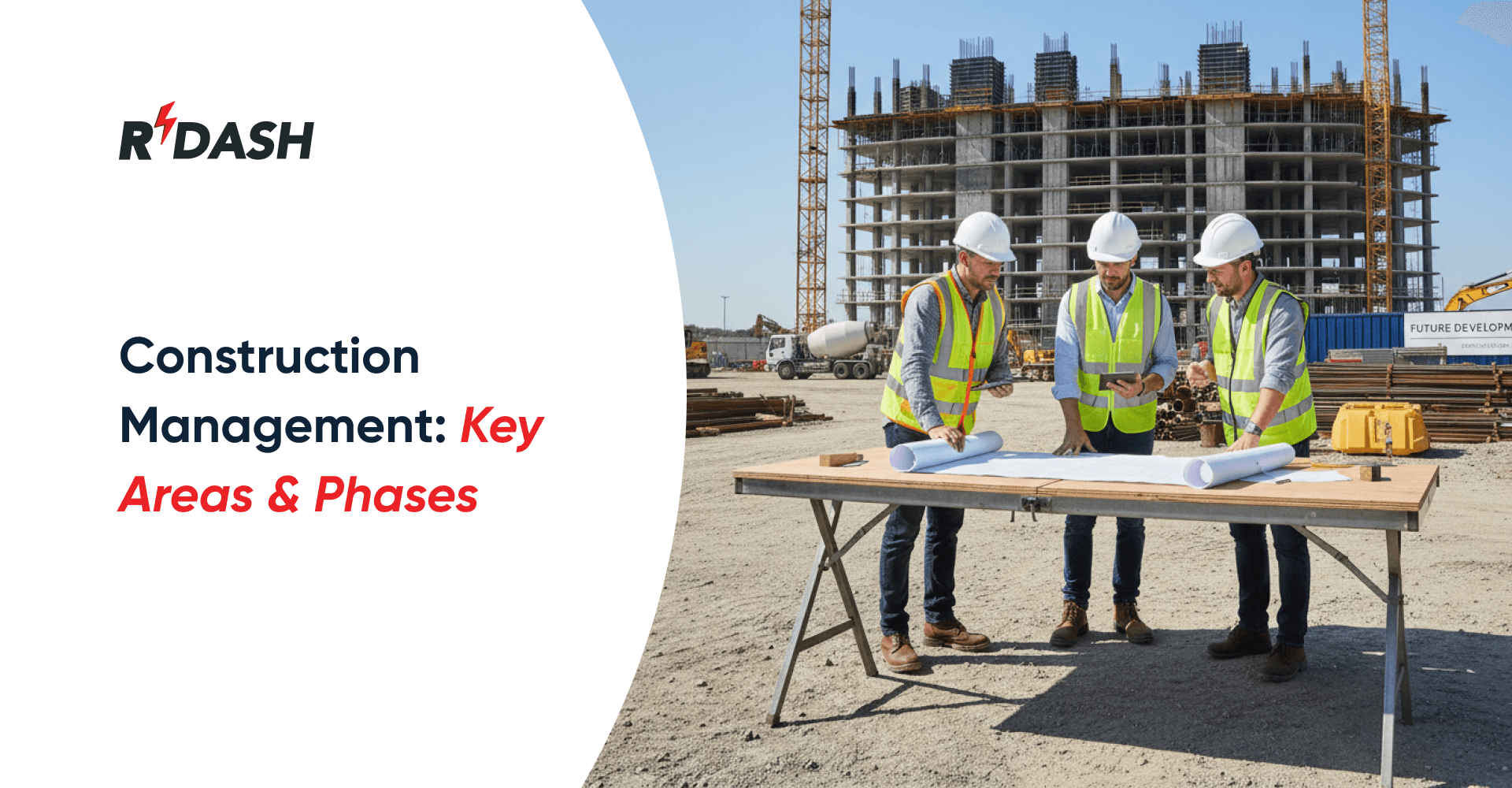What are hard costs in construction?
In construction, hard costs are the direct expenses for physical items like materials and labor that go into building the structure on-site. If you can touch it or see it on the construction site, it most likely falls under hard costs.
Hard costs are also known as “brick-and-mortar” costs because they cover the visible parts of a project, like concrete, steel, roofing, and electrical work. Hard costs often form the biggest portion of a project’s budget and are simpler to calculate than soft costs, which are mostly related to services and indirect work (like legal fees or permits).
Examples of hard costs
Below are some common examples of hard costs found in construction projects:
Site Work
This covers tasks like site clearing, land leveling, and laying the foundation. It may also involve drainage systems, fencing, or temporary access roads.
Foundation and Structure
Costs for concrete, steel, and other materials used in the foundation and frame of the building fall under this category. This is often one of the biggest components of hard costs.
Roofing
Materials like tiles, shingles, waterproofing systems, and the labor needed to install them are included here.
Interior Finishes
These include flooring, painting, ceilings, drywall, and other finishing elements that make the building usable and visually complete.
Mechanical, Electrical, and Plumbing (MEP) Systems
This covers the cost of installing HVAC systems, electrical wiring, outlets, lighting, plumbing pipes, fixtures, and more.
Windows and Doors
The cost of all doors, windows, glass panels, and the hardware and labor to install them is also counted as a hard cost.
Elevators and Escalators
In commercial or multi-floor buildings, the installation of elevators or escalators is considered a hard cost.
Exterior Work
Items like sidewalks, exterior lighting, landscaping, driveways, and paving are all part of the hard cost category.
Factors influencing hard costs in construction projects
Many different elements can affect how much the hard costs will add up to in a construction project. Understanding these can help with better planning and budgeting.
1. Project Size and Scope
Larger projects with more complex designs will naturally have higher hard costs due to increased material and labor requirements.
2. Material Prices
Prices for raw materials like steel, cement, and lumber can fluctuate due to market conditions, transportation costs, or supply shortages. This directly affects your budget.
3. Labor Costs
The cost of skilled labor varies by location, availability, and project complexity. Costs may rise if there aren’t enough workers or if the project requires experts with special skills.
4. Site Conditions
If the land requires heavy clearing, has poor soil, or needs environmental cleanup, the site preparation cost can go up significantly.
5. Building Design
Architectural features, high-end finishes, or custom-built components usually raise the hard cost of a project. A simple design is often cheaper to build.
6. Project Timeline
Faster construction schedules may require more workers or overtime, which increases labor costs. Delays can also raise hard costs due to extended equipment rentals or material price increases.
7. Local Regulations
Building codes and safety rules can influence how construction is done and what materials must be used, potentially affecting cost.
8. Weather Conditions
Weather delays can cause rework or slow down progress, leading to extra labor and equipment costs.
Role of hard costs in construction
Hard costs are key to getting a construction project completed successfully and on budget. Since they include the actual building materials and labor, they make up the largest portion of the overall project budget. These costs are critical because they directly affect how the final structure looks, works, and lasts.
Project teams rely on accurate estimates of hard costs to plan the budget, arrange financing, and control spending during construction. If hard costs go over budget, it often means delays or changes to the design to cut expenses. That’s why tracking hard costs carefully is so important for staying on schedule and avoiding financial surprises.
In short, hard costs are the foundation of the construction process – without them, nothing gets built.
What are soft costs?
Hard costs involve physical building work, while soft costs include the behind-the-scenes services and fees that support the project before, during, or after construction, but aren’t part of the actual structure.
Soft costs are just as important as hard costs because they cover things like planning, legal work, design, and project management. Without these, a project cannot move forward smoothly or meet legal and safety requirements.
Examples of soft costs
Below are examples of typical soft costs found in construction projects:
1. Architect and Engineering Fees
Costs paid to architects, structural engineers, and MEP (mechanical, electrical, plumbing) consultants for designing the building and preparing technical drawings.
2. Permits and Inspection Fees
Every construction project needs permits from local authorities. Inspections may also be required to ensure the work meets safety codes and regulations.
3. Legal and Accounting Services
These include costs for contract reviews, legal compliance, insurance, audits, and accounting services to manage budgets and reports.
4. Project Management Fees
If a project management company or consultant is hired to oversee the construction, their fees are considered soft costs.
5. Financing Costs
This includes interest on construction loans, loan processing fees, and other costs related to project funding.
6. Marketing and Sales Expenses
In commercial or residential projects, expenses related to advertising, sales commissions, or setting up a sales office are also soft costs.
7. Temporary Utilities and Site Facilities
Power, water, internet setup, or temporary site offices used during construction are considered soft costs since they don’t become a part of the building.
8. Insurance
Insurance like builder’s risk and liability coverage helps protect the project and is considered a soft cost.
How soft costs impact overall project finances
Soft costs may not be as visible as hard costs, but they have a big impact on the overall budget of a construction project. In some cases, soft costs can make up 20–30% or more of the total project cost.
Since many soft costs occur before construction even begins – such as design fees, permits, and legal services -they require upfront funding. If not properly planned, these expenses can cause cash flow issues or force delays.
Soft costs also continue after construction is complete. For example, marketing expenses, insurance, and loan interest may still be active even when the building is finished. This makes it important to include all soft costs in the project budget from the very beginning.
Underestimating soft costs can lead to budget overruns, missed deadlines, and added stress for both owners and contractors. A clear understanding of these costs helps keep the project financially stable from start to finish.
Commonly overlooked soft costs in construction projects
While many soft costs are planned in advance, some are often missed or underestimated, which can lead to budget problems later. Here are a few examples of commonly overlooked soft costs:

1. Consultant Fees
Beyond architects and engineers, you may need consultants for environmental studies, safety audits, or green building certifications, which can add unexpected costs.
2. Permit Delays and Extra Fees
If permits take longer to approve or if new rules are added, extra fees may be required, along with more time and money.
3. Temporary Site Services
Costs like portable toilets, site security, and temporary lighting are often left out, even though they are essential during construction.
4. Furniture, Fixtures, and Equipment (FF&E)
Items like desks, chairs, kitchen equipment, or storage systems may not be part of the building structure but are required for operation, and they cost money.
5. Post-Construction Cleaning
Final site clean-up and waste removal after work is done are usually small but necessary expenses that are easy to miss.
6. Insurance Adjustments
Premiums may change depending on the scope and progress of the project, especially if construction takes longer than expected.
Comparing hard costs vs. soft costs
Knowing how hard and soft costs differ is important for keeping your construction budget under control. Here’s a simple comparison:
| Aspect | Hard Costs | Soft Costs |
| Definition | Direct costs for building materials and labor | Indirect costs for services, permits, and planning |
| Examples | Concrete, steel, labor, HVAC systems | Architect fees, permits, insurance, legal services |
| When They Occur | Mostly during construction | Before, during, and after construction |
| Visibility | Physical and seen on-site | Behind-the-scenes and not always visible |
| Budget Share | Usually the largest portion of the budget | Can be 20–30% of total cost |
| Tracking | Easier to measure and estimate | Often missed or underestimated |
Importance of Identifying hard costs vs. soft costs
Being able to separate hard costs from soft costs helps in accurate budgeting and smooth project planning. When project teams clearly separate the two, they gain better control over how money is spent and can make more informed decisions.
Without this distinction, there’s a risk of underestimating total expenses, leading to cash flow problems, missed deadlines, or even project failure. For example, if a team only focuses on material and labor costs (hard costs) but forgets to include design fees, permits, or loan interest (soft costs), the actual cost of the project will be much higher than expected.
Identifying both cost types also helps with:
- Loan approvals: Lenders want a full picture of all costs.
- Contract planning: Some contracts treat hard and soft costs differently.
- Cost tracking: It’s easier to monitor spending when each type of cost is clearly listed.
Simply put, dividing costs into hard and soft categories makes things clearer, reduces unexpected issues, and supports better financial management.
Tips for estimating construction costs
Creating an accurate construction cost estimate is a key part of successful project planning. Here are some simple tips to help you do it right:

1. Start with a Clear Scope
Before estimating costs, make sure you fully understand what the project includes. A clear project scope helps prevent overlooked tasks and reduces the need for assumptions.
2. Break Costs Into Categories
Separate costs into hard and soft categories. This makes it easier to organize your budget and track expenses throughout the project.
3. Use Historical Data
Look at past projects that were similar in size and type. This can give you a realistic idea of what to expect for both material and service costs.
4. Account for Local Pricing
Material and labor costs vary by location. Always check current rates in the area where the project will be built.
5. Add a Contingency
Include a contingency amount, usually 5–10% of the total cost, to cover unexpected expenses or price increases.
6. Consult Experts
Involve professionals like quantity surveyors, estimators, or experienced contractors for more accurate and reliable numbers.
7. Update Estimates Often
Costs change over time. Update your estimate regularly, especially if the project gets delayed or the scope changes.







